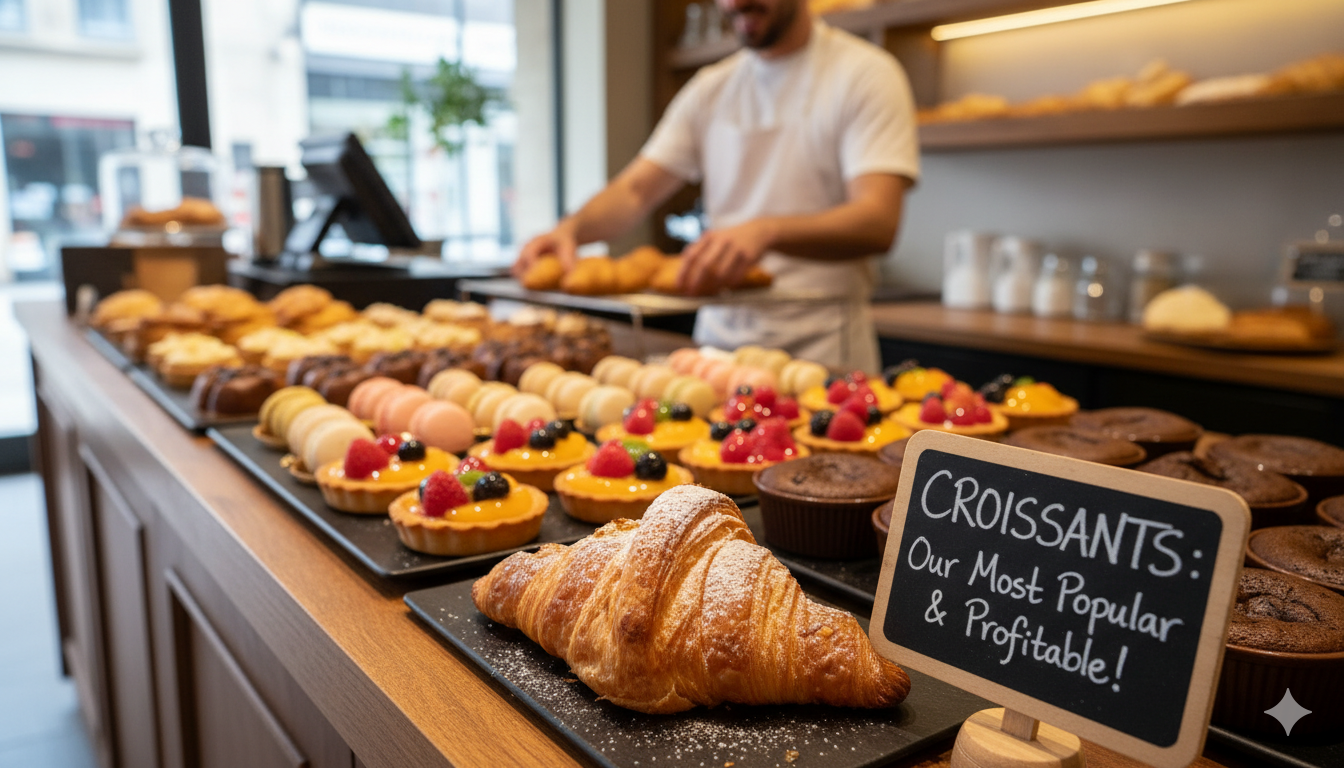When you walk into a bakery, the sweet aroma of freshly baked bread and pastries instantly lifts your mood. But have you ever wondered which of these delicious items actually make the most money for the bakery? While every product has its charm, not all are equally profitable. Let’s dive deep into the economics of a bakery to find out the most profitable item and what makes it so.
Understanding Bakery Profitability
What Determines Profit in a Bakery?
A bakery’s profitability depends on several factors — ingredient costs, preparation time, selling price, and shelf life. Items that require fewer ingredients and less labor tend to yield higher margins.
Importance of High-Margin Products
High-margin products keep the business thriving. These are items that cost less to make but sell at a premium, allowing bakeries to cover overhead expenses while still generating strong profits.
The Economics Behind Bakery Goods
Cost of Ingredients
Flour, sugar, butter, and eggs are staples, but the type and quality can drastically affect costs. For example, organic or gluten-free ingredients raise prices but also allow for premium pricing.
Labor and Production Time
Labor-intensive products like layered cakes take more time and skill, increasing costs. Simpler items like cookies can be made in bulk, maximizing profits with minimal effort.
Shelf Life and Waste Management
Perishable items like cream cakes have shorter shelf lives, leading to waste. In contrast, dry goods like cookies and biscuits last longer and minimize losses.
Top-Selling Bakery Items
Bread
Bread is a bakery staple and sells in large volumes, but profit margins are usually thin due to competition and pricing pressure.
Cakes and Cupcakes
Cakes, especially custom-designed ones, offer great profits because customers pay more for unique designs and flavors.
Cookies
Cookies are quick to make, have long shelf lives, and are loved by all age groups — a perfect combination for profit.
Pastries and Croissants
Though they require more butter and skill, pastries can bring in significant revenue when sold at premium cafes or bakeries.
Evaluating Profit Margins
Low-Cost, High-Return Products
Items like cookies, brownies, and muffins often yield better profits because they’re inexpensive to produce and have longer shelf lives.
Specialty vs. Everyday Items
Everyday items sell consistently, but specialty products like custom cakes bring spikes in revenue during celebrations and holidays.
Most Profitable Bakery Items
Custom Cakes
Custom cakes are among the top money-makers. The personalized touch justifies higher pricing, and customers are willing to pay for unique designs.
Cupcakes
Cupcakes offer a great mix of creativity and profit. With low ingredient costs and endless design possibilities, they remain a customer favorite.
Artisan Bread
Though time-consuming, artisan bread can be priced higher due to quality ingredients and craftsmanship.
Cookies and Biscuits
With long shelf life and easy packaging, cookies offer steady income without much wastage.
Seasonal Treats
Festive items like holiday cupcakes, pumpkin pies, and Easter cookies bring short-term but significant boosts in revenue.
Why Customization Matters
Personalization and Premium Pricing
Customization adds emotional value to bakery products. Whether it’s a birthday cake or wedding dessert, people are ready to pay extra for something personal.
Branding Through Packaging and Presentation
The way your bakery items look affects customer perception. Investing in appealing and professional packaging can dramatically increase sales and brand loyalty.
The Role of Packaging in Bakery Success
First Impressions Count
Beautiful packaging attracts attention. A well-packaged cake or pastry signals quality and care before the first bite.
How Packaging Boosts Perceived Value
Packaging transforms simple bakery goods into luxury items. This is where printed bakery boxes make a big difference — they elevate your brand image while protecting your products.
Effective Pricing Strategies
Understanding Your Market
Know your customers and what they’re willing to pay. A premium bakery in a city center can charge more than a suburban one.
Value-Based Pricing
Focus on the value your products provide rather than competing solely on price.
Upselling and Bundling Techniques
Offer combo deals like “coffee + croissant” or “cupcake box sets” to increase the average order value.
Marketing Your Bakery Products
Social Media Promotions
Platforms like Instagram and Facebook are ideal for showing off your bakery’s creations. Stunning visuals help attract more customers.
Influencer Collaborations
Partnering with local food bloggers can bring exposure and credibility to your bakery brand.
Loyalty Programs
Rewarding repeat customers ensures consistent sales and long-term loyalty.
The Importance of Seasonal Products
Limited-time products create urgency. When customers know something is available only for a short period, they’re more likely to buy immediately.
Reducing Costs Without Compromising Quality
Local Ingredient Sourcing
Buying locally reduces transportation costs and supports your community.
Smart Inventory Management
Use digital systems to track stock and reduce wastage, keeping your margins healthy.
Technology in Modern Bakeries
Online ordering systems, delivery partnerships, and digital loyalty programs have revolutionized how bakeries operate. They streamline processes and improve profitability.
Customer Experience and Repeat Business
Happy customers are repeat customers. Excellent service, consistent quality, and innovation make sure they keep coming back.
Conclusion
In the world of bakeries, the most profitable items are often the simplest yet most customizable cupcakes, cookies, and custom cakes top the list. By understanding costs, optimizing pricing, and leveraging effective packaging and marketing, bakeries can significantly boost their profits. Whether it’s the product itself or the way it’s presented, every detail counts toward sweet success.




